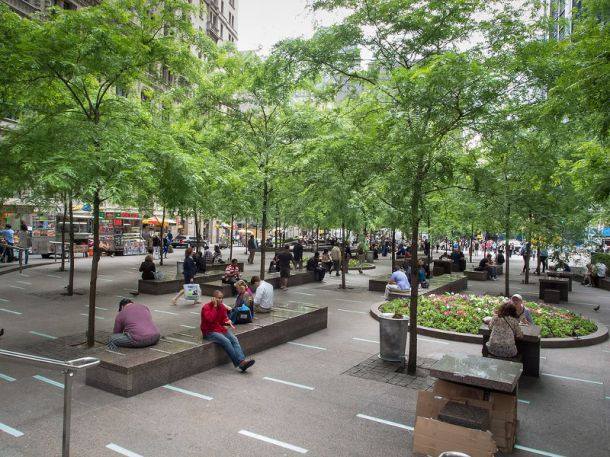Public spaces such as unutilized walkways, open-air sitting spaces, public parks, and buildings uncovered areas are a big part of cities that are often ignored in master plans. While unplanned, improper, or privatized public spaces often generate exclusion and marginalization of communities besides degrading the livability of the urban environment. These spaces actually provide many opportunities among people to come together and engage with the community.
Urban planners globally concur that cities are beautiful when they create and maintain vibrant and accessible public spaces and provide an enabling environment for the delivery of basic services to citizens.
Modern Urban Planning
Thats why, public spaces are considered a valued asset where cities embrace the concept of creating more vibrancy and welcoming areas for everyone to use. They also serve a powerful way in modern urban planning to create more positive environments for people to assimilate and come together as a society as described above.
Unfortunately, urban planning and development approach in Pakistan revolves around accommodating maximum inhabitancy, widening of roads and undertaking mega infrastructure projects. Parks, gardens and recreational points come later. While the planners don’t consider relaxing zones and living areas with necessary public amenities, where people can rejuvenate or rediscover themselves on daily basis.
Karachi Neighborhood Improvement Program
Urban public space is an area that is open and accessible to all citizens of a city. The World Bank points out “in dense built-up cities like Karachi, Pakistan, public spaces are even more important. These are areas of respite and recreation from the stress of city life. They are also social and cultural spaces where livelihoods and businesses are conducted, especially for the urban poor”.
The World Bank Group couple of years ago initiated Karachi Neighborhood Improvement Program to finance improvements in public spaces in the city’s selected neighborhoods and to strengthen the city government’s capacity to provide certain administrative services. The project specifically aims to use a participatory planning process to identify, prioritize, and design highly impactful enhancements to public areas such as sidewalks, open spaces and green spaces, and public buildings.
The Program is also intended to be an entry point to showcase the value of participatory planning and inclusive urban design, as the first step in a longer-term strategy for city transformation and rejuvenation.
Forms & Benefits of Public Spaces
A public space takes many spatial forms, including parks, streets, sidewalks and footpaths, public squares and plazas, playgrounds, marketplaces, community centres, libraries and spaces between buildings and roadsides which are often utilised by street vendors and the urban poor.
These spaces serve a number of functions in a city;
- Provide a great source of entertainment.
- Attract tourists and add to the economy and jobs in the city.
- Serve the objective of ensuring public health
- Help generate interaction of ideas and people to trigger business
- Contribute in mitigation and adaptation strategies for climate change if they incorporate green shade via trees and urban gardening features.
These are all significant features where people seek comfort and solace in the public sphere.
By
Editorial, Infocus


